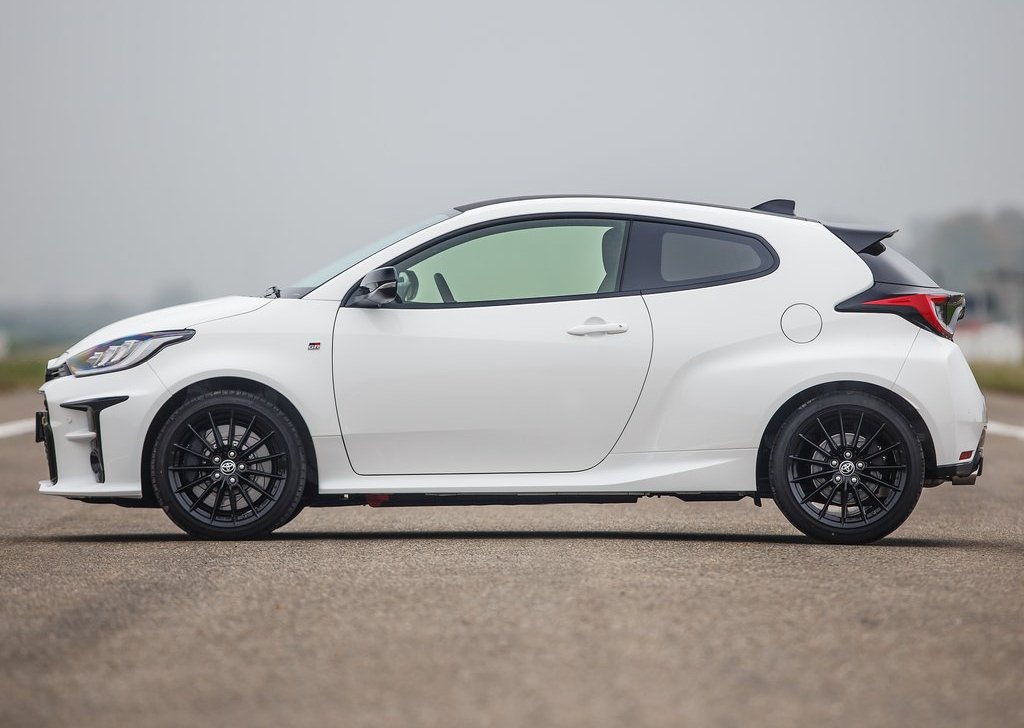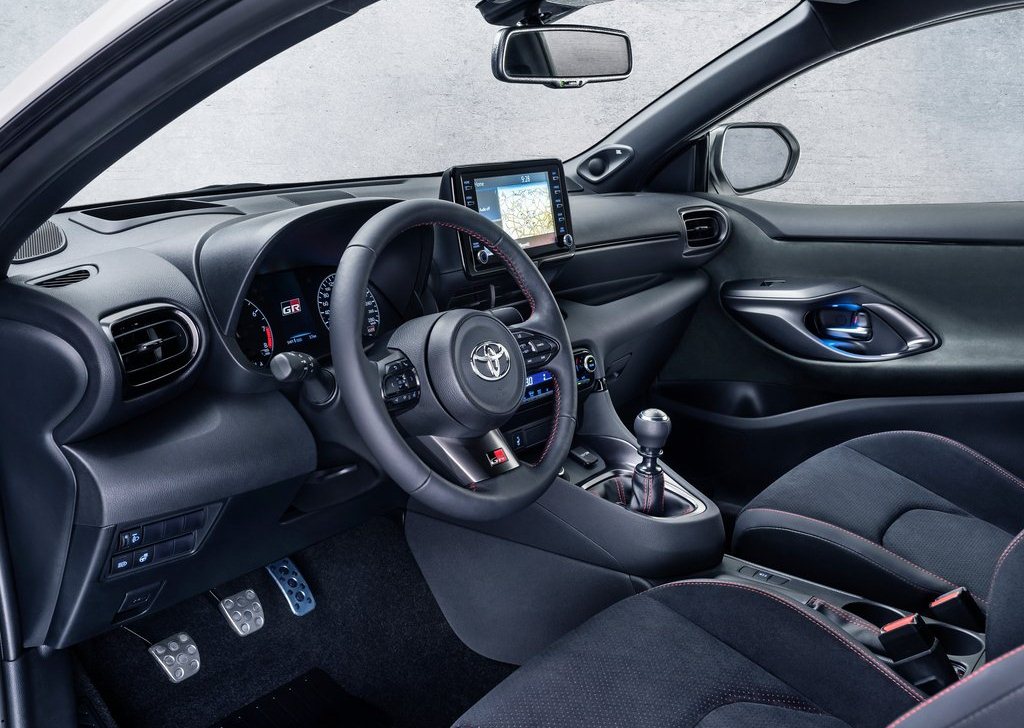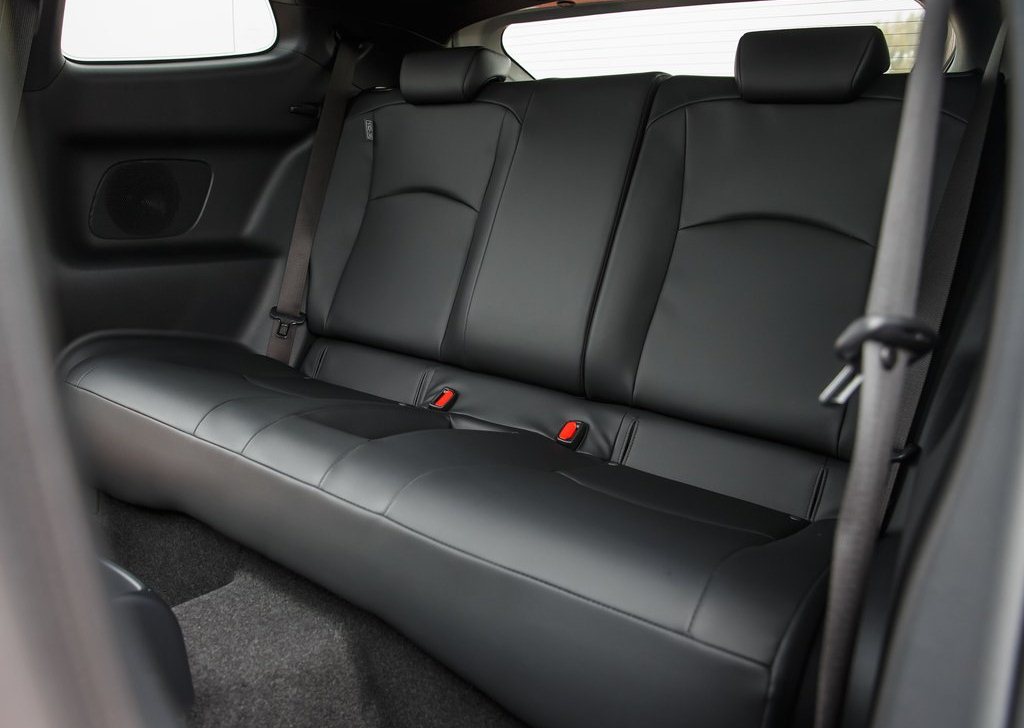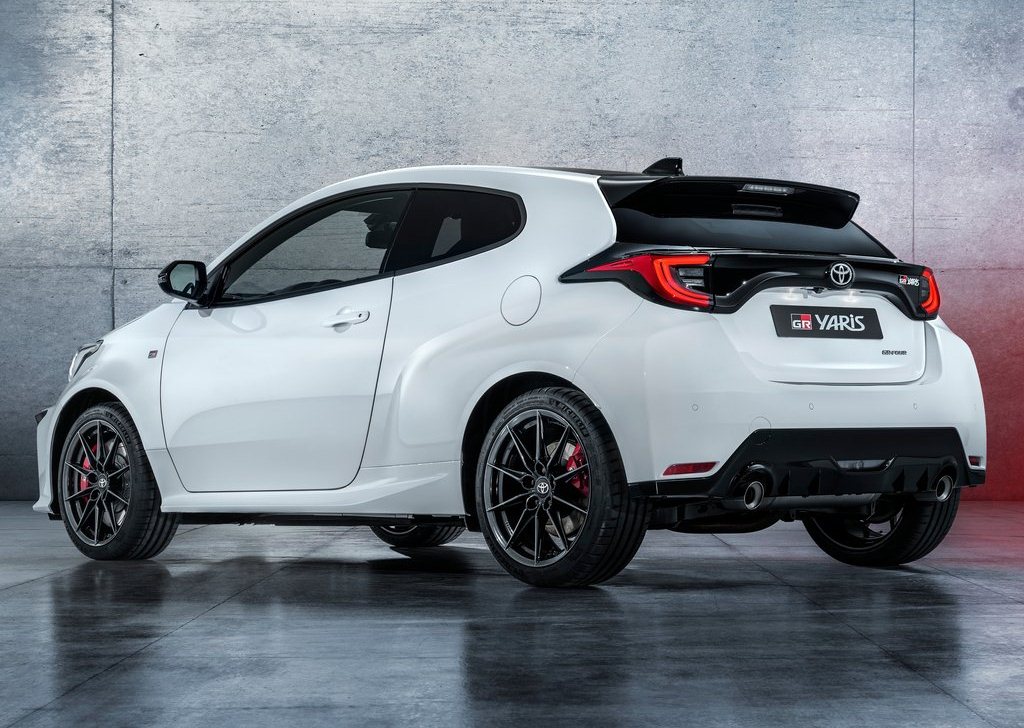When Toyota announced its return to the World Rally Championship in 2015, the concept of building a rally-inspired sports car was part of the plan. The vision was to take technical knowledge and experience from the highest level of international competition and apply them to a new road car that is also suitable for competition driving, and an affordable proposition for customers.
For Toyota President Akio Toyoda, the creation of a sports car made purely by Toyota - the first in 20 years - was a personal ambition. Following on from winning the WRC manufacturers' championship in 2018, he saw a winning car as being key to achieving global recognition as a true auto manufacturer.
The GR Yaris is that car, built from scratch and designed to win at highest levels. It is Toyota's second global GR model, following the successful launch of the GR Supra in 2018.
There were basic challenges to be met in terms of technical know-how and creating a car that customers would buy. From the outset, the development team worked closely with Tommi Mäkinen Racing to better understand how their goals could be achieved. It was a detailed and labour-intensive process, but one which has yielded strong results in terms of a car that has an ideal combination of rigid, lightweight construction, an agile and responsive chassis and a powerful yet compact turbo engine.
Professional rally drivers, including members of TOYOTA GAZOO Racing World Rally Team, drove the prototype models and provided valuable feedback. Testing was also carried out by Akio Toyoda in his expert role as a Toyota Master Driver.
The GR Yaris is built on a unique platform, combining Toyota's new GA-B platform (which debuted on the new generation Yaris hatchback) and a rear section adapted from the GA-C platform used for the Corolla and C-HR. The rally team emphasised the importance of light weight and this is reflected in the use of aluminium body panels and a forged carbon composite roof in the body structure, and scrutiny of how weight could be reduced in parts throughout the car.
For the best possible aerodynamic performance, the body itself is another unique element: although based on the new Yaris hatchback, it is a three rather than five-door model, with a lower, tapering roof line. This has been designed specifically to direct wind flow onto the large rear rally car spoiler to generate extra downforce. As with a competition car, the shaping of the lower body efficiently channels airflow down the sides of the vehicle.
The engine is also all-new, a 1.6-litre, three-cylinder turbocharged unit. It is the world's most powerful three-cylinder engine and also the smallest and lightest 1.6 turbo. Producing 261 DIN hp and 360 Nm of torque, it complies with WRC2 technical regulations and can launch the GR Yaris from rest to 100 km/h in just 5.5 seconds, and on to an electronically limited top speed of 230 km/h. Its construction makes use of features derived directly from motor sport, including a ball bearing turbocharger, large-diameter exhaust valves and multi-jet oil piston cooling.
A kerb weight of just 1,280 kg gives the GR Yaris an excellent weight-to-power ratio of 4.9 kg per 1 DIN hp.
Engine power is harnessed through a Toyota's new GR-FOUR permanent, electronically controlled all-wheel drive system. Another competition-inspired feature, this provides three driving modes with different front/rear drive torque to suit the conditions - Normal, Track and Sport.
Exterior design
The GR Yaris' packaging has been developed by pushing the limits of performance, with close consultation between the design team and colleagues at Tommi Mäkinen Racing, TOYOTA GAZOO Racing's World Rally Championship partner.
Although the new Yaris hatchback is the base vehicle for the new model, the only unchanged exterior parts are the headlights, door mirrors, rear light clusters and the shark fin antenna on the roof. Everything else has been redesigned or adapted to meet the targets for downforce, aerodynamic performance and stability.
Overall length is 3,995 mm, 55 mm greater than the standard Yaris, with the wheelbase unchanged at 2,560 mm. The redesigned front and rear increase the overhangs by 40 and 15 mm respectively. Overall width is 1,805 mm (+60 mm) and overall height 1,455 mm (-45 mm)
The principal change is the move from a five-door to a three-door body. The GR Yaris is the only model in the new Yaris range to use this format, appropriate for WRC competition where the regulations stipulate no changes may be made or aerodynamic elements added to the doors.
The requirement to maximise downforce and aerodynamic performance resulted in a lowering of the car's roof line, by up to 95 mm at its rearmost point compared to the standard hatchback. The revised profile increases the volume of air flow hitting the spoiler mounted on top of the rally car back door, generating extra downforce. Following the aerodynamic performance of the competition car, the design of the lower body directs air flow from the front wheel housing close along the side of the vehicle.
The front of the car projects a strong sense of purpose featuring the signature GR "functional matrix" design. Cooling air is fed to the radiator, intercooler and engine compartment through a large, rectangular lower grille with a wide honeycomb mesh. The prominent spoiler has a downforce-generating shape, with a raised centre section that controls the flow of air beneath the vehicle. There are also deep upper and lower lips at each corner that act as canards, generating downforce when driving through bends. The grille is flanked by large vertical inlets for the brake duct and intercooler, with circular LED fog lights positioned at the far edges of the bumper unit. Discreet GR badging is featured on the lower grille, the front wings and back door, alongside the right-hand LED light cluster.
At the rear, the tapering of the roof and rear pillars and the addition of the deep, high-mounted spoiler, enhance downforce and aerodynamic performance. The wide track and flaring of the rear wings emphasise the car's wide and low silhouette. The rear wings have a flat side surface and minimised corner radius, which smooth the flow of air away from the vehicle and reduce drag. Aerodynamic performance is also improved by shape of the rear diffuser (the aero step) being folded into the bumper unit.
Equal attention has been paid to under-car aerodynamics with an engine under-cover, left and right-side floor under-covers and spats in front of each wheel.
GR Yaris is available in four paint finishes that match TOYOTA GAZOO Racing's competition colours: Super White as standard and optional White Pearl, Emotional Red and Precious Black.
Interior design
The design of the GR Yaris' interior reflects the car's performance, particularly around the driver's cockpit.
The binnacle has the same binocular arrangement as the standard Yaris but with additional functions related to the car's specific performance qualities. The 4.2-inch TFT colour multi-information display adds an all-wheel drive indicator showing the torque distribution and mode selected for the GR-FOUR system and a turbo pressure monitor. The analogue meters have white figures with red pointers for high, at-a-glance visibility.
The gear shift lever has a high position on the centre console, raised by 50 mm and set close to the steering wheel, helping the driver make quick shifts. The action is light with short shift strokes, adding to the performance quality. The GR Yaris has a mechanical hand-operated parking brake, which the driver can use for cornering in rally stage driving. This is made possible by a specific function of the GR-FOUR coupling system which fully opens the coupling when the handbrake is used.
The GR-FOUR selector control is set just forward of the gear shift, for easy changes between Normal, Sport and Track modes.
The interior is finished in black with Smoke Silver trim details around the door handles, centre console, steering wheel and side air vents.
The luggage compartment has a 174-litre capacity. With the rear seatbacks folded, there is space enough to carry a set of four large tyres or a bicycle. With the accessory battery housed beneath the deck board, the GR Yaris comes with a tyre repair kit in place of a spare wheel.
POWERTRAIN
The fundamental requirement for the GR Yaris's engine was a sports unit that would deliver outstanding, powerful acceleration and exhilarating sense of continuous power, in keeping with the car's "GR" designation. The result is a new, in-line three-cylinder engine with a versatile quality that makes it comfortable for day-to-day driving as well as competition performance.
The 1,618 cm3 12-valve engine meets the World Rally Championship's Rally 2 (formerly R5) regulations, following Toyota's negotiations with the sport's governing body to allow a three-cylinder format. Atsunori Kumagaya, who led the development project, explained: "We preferred this engine due to its light weight and compact size making it simple to install, while the lack of exhaust gas interference made it easier to obtain power."
The unit is in fact the largest-capacity and most powerful three-cylinder engine currently in production, yet it is also the smallest and lightest 1.6 turbo unit. Its maximum power output is 261 DIN hp/192 kW at 6,500 rpm, with maximum torque of 360 Nm delivered from 3,000 to 4,600 rpm - performance on a par with that of a 2.0-litre turbo unit.
GR Yaris is as light as a B-segment hot hatch (kerb weight 1,280 kg), yet the power is comparable to C-segment performance models. Acceleration from 0 to 100 km/h can be accomplished in 5.5 seconds, while the top speed is electronically limited to 230 km/h.
With a focus on power and light weight, the GR Yaris achieves an exceptional weight-to-power ratio of 4.9 kg per DIN hp. The car's body-in-white weight is 12% less than the new generation Yaris, thanks to the use of lightweight materials in its construction, including aluminium for the bonnet and doors and carbon fibre composite for the roof (further details above). Compared to the standard Yaris, the engine is positioned 21 mm further back in the compartment, contributing to the car's weight distribution, dynamic balance and low centre of gravity.
The development team drew on the knowledge and experience of their TOYOTA GAZOO Racing colleagues to maximise the engine's potential, adopting a number of motorsports-derived technologies to help them meet their goals. These include a ball-bearing turbocharger, large-diameter exhaust valves and multi-jet oil piston cooling.
Turbocharger
The engine's single-scroll turbocharger had to be strong enough to deal with high outputs, but using a large-capacity unit risked diminishing performance though turbo-lag. The solution was to adopt wear-resistant abradable seals and a ball bearing to improve the compressor's efficiency and reduce friction. The controls are positioned close to the wastegate valve so that gas flows on the turbine side, reducing lag when the accelerator is pressed.
The turbocharger is integrated in the exhaust manifold, reducing weight, while control of wastegate bypass gases is used to improve the warm-up efficiency of the catalyst. The controls have been improved so that turbo performance can be fully utilised from low airflow volumes, contributing to excellent acceleration response. An air by-pass valve controls the turbo pressure and prevents surge. The large, cross-flow type intercooler features a long core length and low pressure-loss inner fins to help realise high engine output, responsiveness and cooling capacity.
Fuel system
The high-pressure (22MPa) D4-S direct fuel injection system operates with increased pressure to achieve finer spray atomisation. The high-tumble air flow in the combustion chamber increases the dispersion of the injected fuel to enhance engine performance. The six-hole spray design avoids interference with the valves to help achieve lower emission and has been optimised for precise control.
The port injection is via long-nozzle, 10-hole injectors. Intake port flow has been optimised to reduce fuel adhesion to the walls, contributing to fuel and emissions efficiency. Optimisation of the moving parts and magnetic circuit give excellent performance at high temperatures, which again reduces fuel consumption and emissions.
Suspension
The front suspension is a new MacPherson strut design that offers both light weight and high rigidity that maximises the tyres' grip potential.
The requirement was for the suspension to be capable of delivering all the engine's power to the road and maximise the tyres' cornering capability on all surfaces, so the driver can control the car with confidence it will perform faithfully.
To achieve overall high rigidity, development focused on the hub bearing and the front lower arm bushing. The rigidity of the hub bearing and front lower arm bushing were increased, with a reinforcing patch add also added to the front lower arm. The system features an exclusive, highly rigid front knuckle.
The suspension geometry and settings have been defined to maximise the tyres' grip capability. The new knuckles, with a lower joint ball position, enable an increase in initial camber and optimised roll steer characteristics. The anti-roll bar layout and spring characteristics have also been optimised and the system uses an exclusive, high-response shock absorber set-up.
The new GA-C-derived platform allowed for a specific rear suspension system to be designed to meet the GR Yaris' performance targets, accommodating all-wheel drive and achieving high levels of agility and stability. The design uses trailing double wishbones, in place of the torsion beam arrangement found in the standard Yaris hatchback. As with the front suspension, the design achieves light weight and high rigidity and focuses on maximising tyre grip.
The system helps keep the rear tyres firmly planted, with the excellent road-holding providing harder lateral and torsional movement, which is key to vehicle control and more supple vertical movement. Factors contributing to the rigidity include two ball joints on the lower side, and more rigid bearings and rear trailing arm bushes. New upper arms with a shorter span increase the initial camber, while, as with the front suspension, exclusive shock absorbers are fitted and spring characteristics are optimised to achieve the best possible grip.
Wheels and tyres
The GR Yaris is fitted as standard with 18-inch cast alloy wheels with a light and highly rigid multi-spoke design, the shape of the spokes reflecting the lines of a traditional Japanese sword. The tyres are 225/40R18 Dunlop SP Sport MAXX 050.
The GR Yaris Circuit Pack comes with lighter, forged alloy BBS wheels with a 10-spoke design, shod with Michelin Pilot 4S high-performance tyres, designed for extra grip for high-speed driving stability and control. To ensure the tyres' full performance potential can be realised, the Circuit Pack features retuned suspension, with stiffer springs and anti-roll bars, adapted shock absorbers, and adjustment to the electric power steering assistance.
Brakes
It is significant that the brakes fitted to the GR Yaris compare in size to those used by the GR Supra - in fact the front discs are larger in diameter. The system is designed for ample braking ability while maintaining vehicle posture true to the driver's intentions. Performance is responsive and controllable, giving rewarding continuity and balance to brake-corner-accelerate driving.
At the front there are 356 mm ventilated discs with four-pot, lightweight aluminium callipers; the rear brakes are 297 mm ventilated discs with two-pot aluminium callipers. On the GR Yaris Circuit Pack the front callipers are painted red and decorated with the GR logo.
High-friction pads are used front and rear. The brakes' heat capacity is suitable for circuit driving, with performance closer to that of heavier and more powerful C-segment cars.
For the driver, the brake pedal has been designed with a short stroke and tuned for solid feedback. Braking has a linear feel, with little variation between city and sports driving.
MANUFACTURING
Toyota recognised from the start of the model's development that a new, low-volume sports car production system would be required for the GR Yaris. The car is built exclusively at a new TOYOTA GAZOO Racing production facility, created within Toyota's Motomachi plant in Japan.
The production line comprises a series of individual assembly cells, connected by automatic guided vehicles (AGVs) rather than the conveyors featured in conventional car plants. This fully flexible method of working, with many manual assembly techniques, enables precise body and suspension alignment, with variations in vehicle dimensions and weight kept to a minimum. The high degree of accuracy and the crafting the GR Yaris' highly rigid body, would be more challenging to achieve on a standard, high-volume production line.
True to its commitment to people development, TOYOTA GAZOO Racing has brought together highly skilled technicians from throughout the company, team members who are renowned for their exceptional abilities and attention to detail. They will contribute to the craftsmanship and technical skills training the GR factory will provide for workers at other Toyota facilities.


















0 Comments